Temple of Literature | A Timeless Tribute to Vietnamese Education
Tucked in the center of Hanoi, the Temple of Literature is a timeless tribute to Vietnam’s intellectual legacy and rich cultural past. Often referred to as the birthplace of Vietnamese education, this treasured location provides a unique window into the historical path of the nation. Let MOTOGO Tours explore!

Introduction about Temple of Literature
Historical Background
Founded in 1070 by Emperor Ly Thanh Tong, who devoted the shrine to the great Chinese scholar Confucius, the shrine of Literature Originally set out as a center of worship, it soon developed in 1076 into Vietnam’s first national institution, the Imperial Academy. The temple saw the rise and fall of kingdoms throughout ages, each leaving their imprint on this cultural emblem.
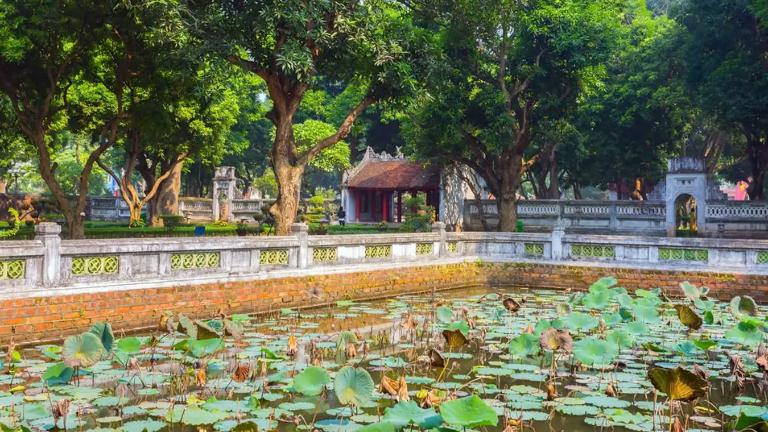
Early on, the Temple of Literature provided scholars preparing for service in the royal court with a training field. These academics were chosen from thorough tests gauging their familiarity with Confucian masterpieces. Reflecting the changes in governmental power, cultural values, and educational methods, the temple’s development mirrors Vietnam’s larger history.
Architectural Significance
The Temple of Literature is no different; Vietnamese architecture is distinguished by its harmonic mix of human craftsmanship and natural elements. With its five separate courtyards, each with a designated use, the temple’s design provides evidence of classic Vietnamese architectural ideas.
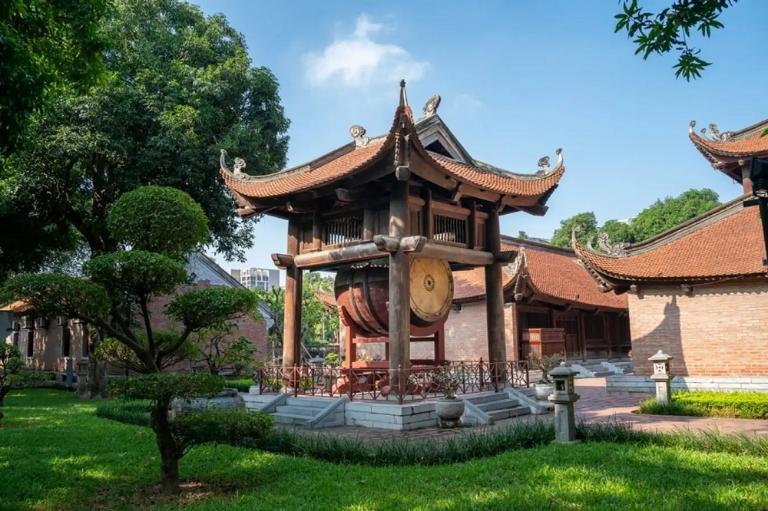
Featuring complex carvings, wooden beams, and stone paths, the temple is an arresting illustration of old Vietnamese architecture. Reflecting Confucian ideas of harmony and order, the design stresses symmetry and balance. Tall brick walls divide every courtyard, and gates there represent the journey from one world of knowledge to the next.
>>> You may also like: Ho Chi Minh Mausoleum: A Comprehensive Guide to Vietnam’s Iconic Landmark
Cultural and Educational Role
More than only one of historical landmarks in Hanoi, the Temple of Literature represents Vietnam’s commitment to intellectual development and education. Being the Imperial Academy’s site, it was quite important in forming the brains of Vietnam’s elite. Students at this institution received Confucius’s lessons, which stressed moral integrity, filial devotion, and respect of authority.
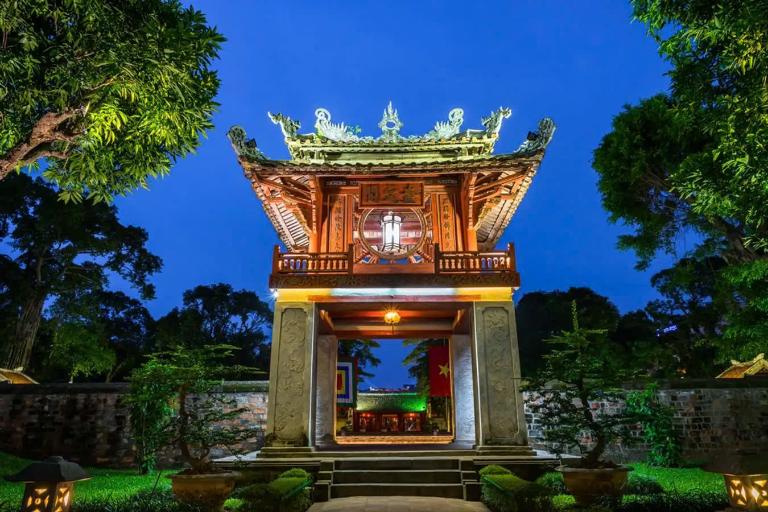
Vietnamese education is heavily influenced by the Temple of Literature. With education being pillar of Vietnamese society, it created a legacy of scholarly excellence that persists today. The temple’s function as a center of knowledge also emphasizes Vietnam’s close relationship to Confucian principles, which have been fundamental to the nation’s cultural character.
The Five Courtyards of the Temple of Literature
Comprising five courtyards, each with special meaning and use, the Temple of Literature is a vast complex These courtyards are more than just areas of a historical site; they are the development of knowledge and enlightenment, each one a step toward the core of wisdom and understanding.
First Courtyard: Gateway to the Temple
Starting in the First Courtyard, which acts as the doorway to this holy site, the path through the Temple of Literature is Visitors arriving by the great main gate, Van Mieu Mon, are met with a serene area surrounded in rich vegetation. Old trees that have weathered the test of time surround the courtyard and provide a calm environment that contrasts with the busy streets of Hanoi just outside.
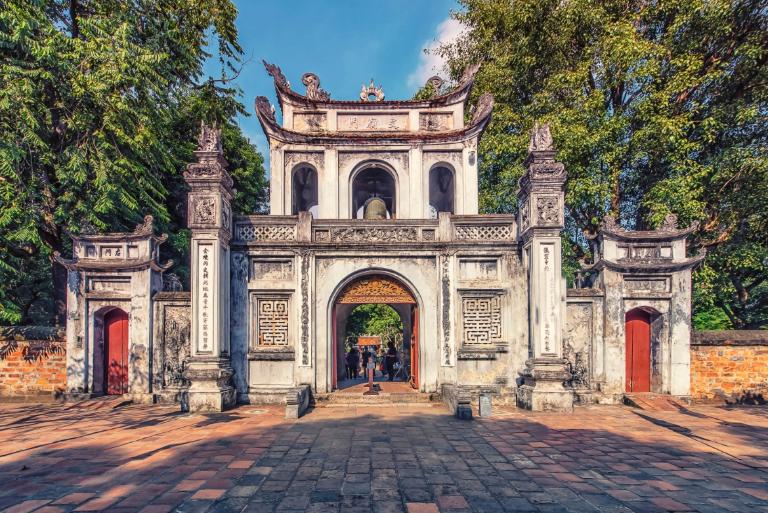
This courtyard is the first step towards knowledge; it’s a place where guests may leave behind the outer world and get ready for the intellectual and spiritual trip ahead. The serene settings are meant to quiet the mind, therefore facilitating the ideal setting for introspection and meditation.
Second Courtyard: The Path to Wisdom
Arriving in the Second Courtyard, sometimes known as the Great Middle Gate (Dai Trung Mon), you descend farther into the temple complex. This courtyard represents the road to wisdom and is here where the change from the physical to the cerebral starts.
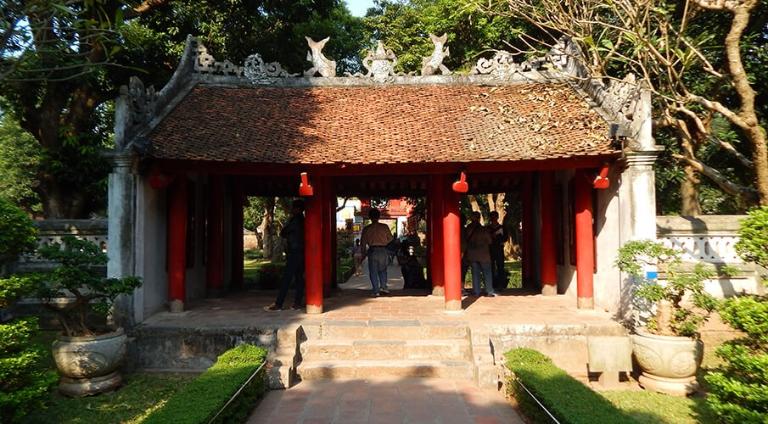
Carefully maintained lawns and historic stone cranes of cranes perched atop turtles, signifying lifetime and endless knowledge, surround the main road. Rich in symbolism, the Crane-Turtle sculptures show the loftiness of intellectual aspirations while turtles stand for endurance and tenacity. Taken together, they inspire guests of the principles guiding the search of knowledge.
>>> Article for you: The One Pillar Pagoda: Discover Vietnam’s Cultural Jewel
Third Courtyard: The Well of Heavenly Clarity
Possibly the most strikingly beautiful section of the temple complex is the Third Courtyard, sometimes referred to as the Thien Quang Tinh (Well of Heavenly Clarity). The main feature of this courtyard is a big rectangular pond whose motionless waters mirror the nearby buildings, therefore providing peace and simplicity.
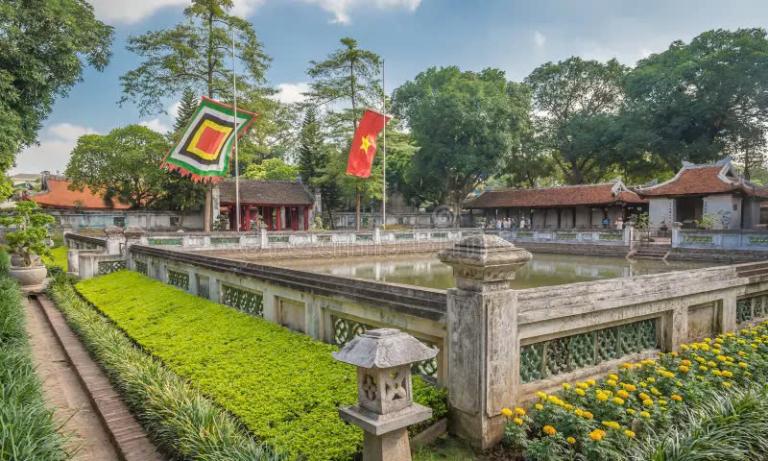
The well of heavenly clarity represents the clear, concentrated mind needed for academic work. True understanding in Confucian tradition depends on pure intent and clarity of thinking. The mirror of the temple structures in the well represents introspection and the clarity resulting from intense intellectual search.
Two rows of stone stelae, set on turtle backs, flank the pond and honor the accomplishments of the academics who passed the royal tests. For visitors, these stelae inspire them and are evidence of the intellectual legacy of the temple.
Fourth Courtyard: The House of Ceremonies
The most holy area in the temple, the House of Ceremonies (Dai Bai Duong) resides in the Fourth Courtyard The spiritual and intellectual center of the Temple of Literature is this courtyard, where most significant rites and tests were conducted.
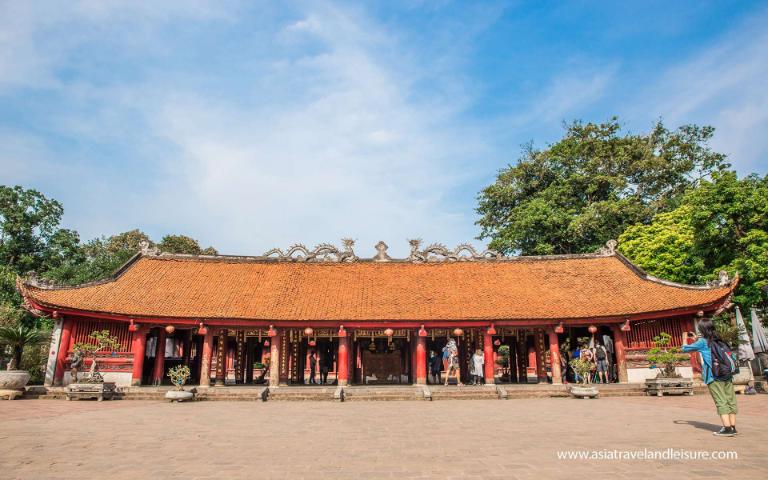
Grand in nature, the House of Ceremonies boasts a roof covered in traditional Vietnamese patterns and detailed wooden carvings. Ceremonies including the yearly rites honoring Confucius and other great academics took place in this edifice. Students would flock here to honor their instructors and ask blessings for their academic endeavors.
Altars honoring Confucius and other revered leaders in Vietnamese and Confucian history abound within the House of Ceremonies. Reflecting the great cultural value of the area, the atmosphere is one of respect and veneration.
>>> Explore Hoa Lo Prison: A Dark Chapter of Vietnam War
Fifth Courtyard: The Temple of Confucius
The trip over the Temple of Literature comes to a head in the Fifth Courtyard. The most holy space in the whole complex is this courtyard, home to the Temple of Confucius (Dien Thanh). It honors Confucius, his students, and other eminent academics who have greatly advanced Confucianism and education.

Rising majestically with altars, sculptures, and tributes honoring the great philosopher and his teachings, the Temple of Confucius is Visitors can consider the Confucianist values—morality, respect of authority, and the search of knowledge—in the courtyard, which is meant to be a place of meditation.
The main altar, where a Confucius monument stands, sits at the middle of this courtyard. Surrounded by sculptures of his four best friends, each reflecting a virtue vital for a well-rounded education. The Temple of Confucius reminds us of the continuous influence of Confucian principles on Vietnamese education and society.
Useful information for visitors to Temple of Literature
Temple of Literature Opening Hours and Entry Fee
- Opening Hours: 8 AM – 5 PM daily
- Entrance Fee:
- Adults: 70,000 VND
- Students: 35,000 VND (student cards required)
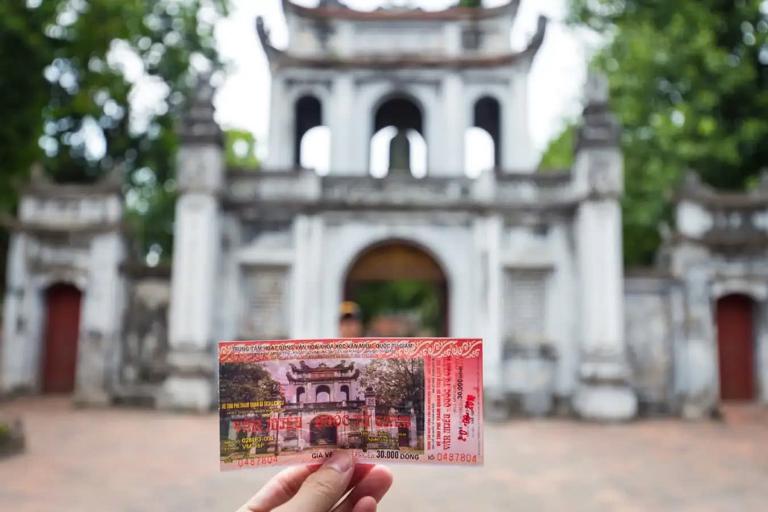
Directions to the Temple of Literature
Hanoi travel wouldn’t be completed if you didn’t visit Temple of Literature. Conveniently situated close to four main streets: Nguyen Thai Hoc, Ton Duc Thang, Van Mieu, and Quoc Tu Giam lies the Temple of Literature. This makes it simply reachable from anywhere in Hanoi. Google Maps has directions; you may drive there yourself or use a local ride-hailing app like Grab or Gojek. Buses number 2, 23, 38, 25, and 4 all stop close to the temple if you ride public transportation.
In addition, to enhance your experience, you can choose guided tours like Hanoi Motorbike Tours. They will provide a comprehensive overview of Temple of Literature’s history and significance. In addition to Temple of Literatire, you should also explore other tourist attractions, such as Hoan Kiem Lake, Ngoc Son Temple, Hanoi Old Quarter, Hanoi Opera House,…
Best time to visit
Especially on weekends and holidays, the temple may get packed. Early in the morning or late in the afternoon, when the traffic is lighter and the light is ideal for pictures, is the finest times to visit.

Popular Activities
Visitors of the Temple of Literature can enjoy a lot of events. Among the rather popular pastimes are:
- Exploring the courtyards and gardens
- Visiting the National University
- Learning about the history of the temple
- Taking photos
- Relaxing in the peaceful atmosphere

Tips for Visitors
Here are a few tips for visitors to the Temple of Literature:
- Given its cultural and historical value, one should dress modestly. Suggested is light, comfortable clothes covering the knees and shoulders.
- The temple is a quiet site, hence it’s crucial to refrain from causing disturbance to other guests or noise generation.
- The temple is a beautiful place, and you’ll want to capture your memories.
- Although you could visit the temple on your own, a guided tour will help you to better appreciate the background and relevance of the place. Many of the tours come in several languages.
- As you walk across the courtyards, slow down. Every one has a different ambiance and background; so, stop to value the little elements, from the stone sculptures to the old trees.
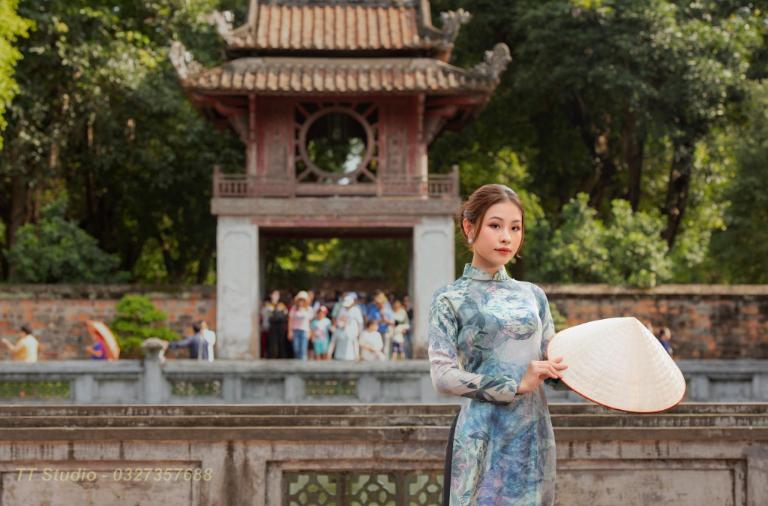
The Temple of Literature is a timeless tribute to Vietnamese education and culture. From all around the world, this ancient complex still inspires and enthralls guests since it has been so important in forming the history of the country. The historical site is a must-visit destination in Hanoi regardless of your interests—history, culture, or just a quiet spot to unwind.
Related Posts:











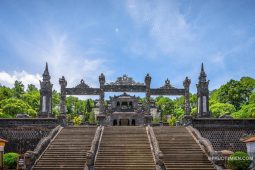
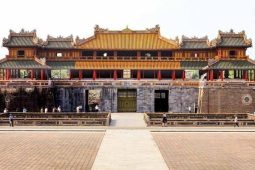

Be the first to comment!